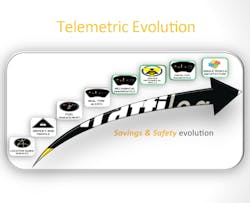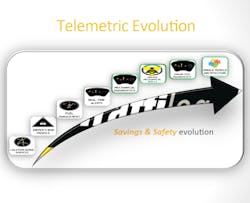Future is now for predictive maintenance, says telematics company
Predictive maintenance—using telematics and big data to fix a truck before it’s broken—will be “a game changer” for the industry, or so I wrote a couple of weeks ago after a visit with some Daimler Trucks North America and Zonar Systems executives. The timetable, they estimated, would be 24 months before data analysis would provide hints and recommendations to customers as to optimizing performance and anticipating problems. I quickly was contacted by the folks at Traffilog America who said that the future of predictive maintenance is, in fact, now. So we had a chat.
“Traffilog has been doing this for the last three to five years,” says Rudi Slochowski, vice president of business development for Traffilog America, who then walked me through a presentation aimed at explaining “how we do it, and what makes us different.”
First off, Traffilog America is a new company, launched at the beginning of the year. But they are partners with Israel-based Traffilog, founded in 2003 to commercialize vehicle telematics technology developed by the Israeli military. Traffilog’s customers include auto, bus and truck makers from around the world, and their fleet customers.
Most significantly, that technology is now in 41 countries, and has gathered some 14 billion miles of vehicle performance data, Slochowski explains.
“We’ve developed our algorithms that dive a lot deeper into the big data analytics, more than the GPS and driver safety and mechanical fault codes that most companies give,” he says. “We excel at predictive and preventative maintenance. We can predict ahead of time when a problem will occur in those trucks.”
The key is the proprietary algorithms to track trends, whether that’s brakes or oil temperature, gearboxes, clutches or turbos.
“Anything that has wheels and a CAN bus, we can extract that data and send it back in easy-to-use reports,” he says.
Indeed, Traffilog is a “next generation solution” because the platform offers not only the GPS services, driver safety monitoring, fuel management and on-the-road diagnostics and reporting that other systems do, but advanced technology that is years ahead of the competition, according to Slochowski.
So Traffilog tracks not just the driver safety events that trigger alerts, it monitors exactly how a driver drives his truck. And not just how he drives the truck, the atmospheric conditions at the time, for additional context and more exact analysis. The company also has in-house trainers to assist with driver coaching.
“Driver mechanical behavior is probably is probably the biggest factor in today’s industry,” Slochowski says. “Seeing how that driver operates his vehicle: Does he use the brake correctly, does he use the clutch correctly? Dos he shift gears correctly? Does he use the engine brake to slow down? That behavior leads to wear and tear—not just fuel consumption—and it leads to downtime.”
But wait, the marketing manager continues, there’s more. And he gets to the predictive diagnostics piece of what he calls the “telemetric evolution.”
Closely monitoring pedal position has allowed Traffilog to save a bus fleet 30% on fuel and, more interestingly, has led to a 30% reduction in brake pad replacements for one of its OEM customers. Seeing a problem with turbo wear, Traffilog can spot drivers who aren’t giving the turbines enough time to spin up and down in turning the engines on and off. Then there’s the case of an oil pressure drop in a truck that has been regularly running the same route, and a hose leak detected because of an increase in compressor use, and the examples go on and on.
Along with real-time notifications on critical issues, Traffilog generates custom reports detailing fleet performance and driver efficiency trends. Customers receive a predictive report called the “doctor’s note” that highlights these potential mechanical issues. Additionally, Traffilog staff will analyze the data to catch trends “before the company does.”
The next step, which is “very close,” will be for the algorithm to make the predictions and for the system to transmit them instantly and automatically, Slochowski notes.
Finally, Traffilog is designed to integrate with “essentially anything” and serve as a “central hub” for a fleet’s truck camera system, TPMS, dispatch software, etc., Slochowski adds.
He reports Traffilog America had installed the system in about 2,000 trucks through mid-year, with a first-year target of 5,000.
“The game will change when a company can predict,” Slochowski says. “Preventive diagnostics is not the same as predictive, to be able to show the company ahead of time. No [competitor] can produce and extract the type of data that Traffilog can. We’ve been waiting for the opportunity to penetrate the U.S. market. We’ve had some quick success, and we look to only get stronger.”
About the Author
Kevin Jones
Editor
Kevin has served as editor-in-chief of Trailer/Body Builders magazine since 2017—just the third editor in the magazine’s 60 years. He is also editorial director for Endeavor Business Media’s Commercial Vehicle group, which includes FleetOwner, Bulk Transporter, Refrigerated Transporter, American Trucker, and Fleet Maintenance magazines and websites.
Working from Beaufort, S.C., Kevin has covered trucking and manufacturing for nearly 20 years. His writing and commentary about the trucking industry and, previously, business and government, has been recognized with numerous state, regional, and national journalism awards.


